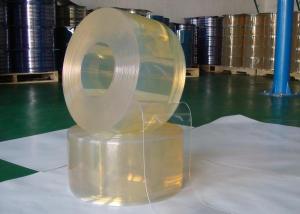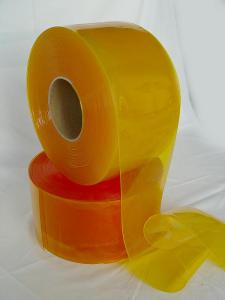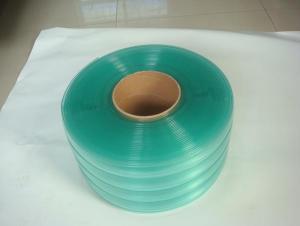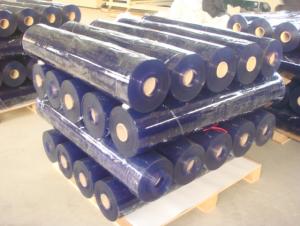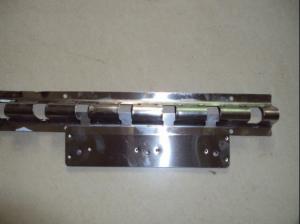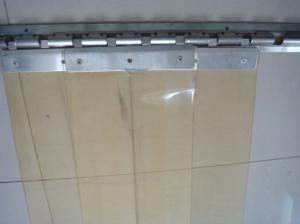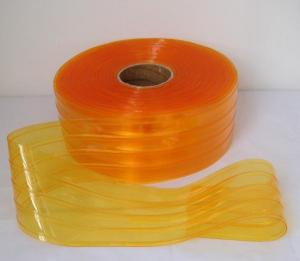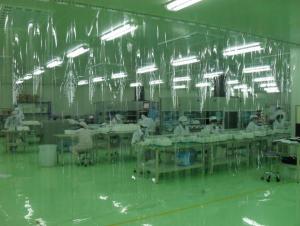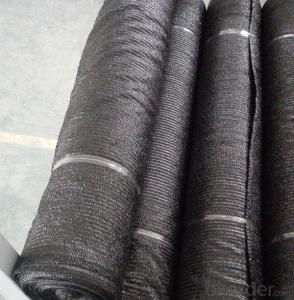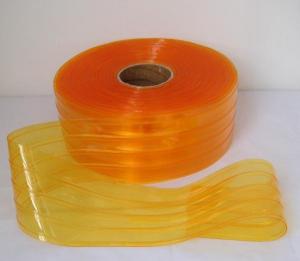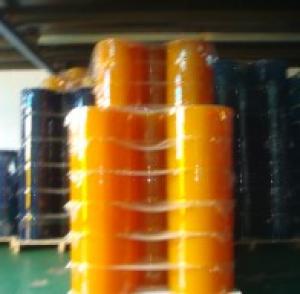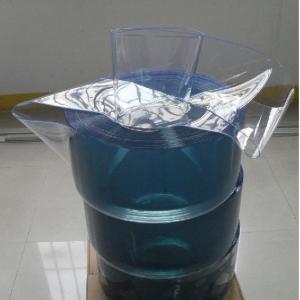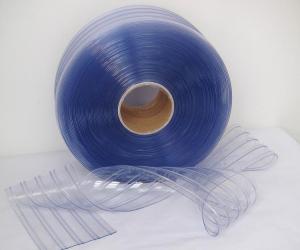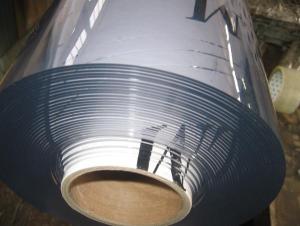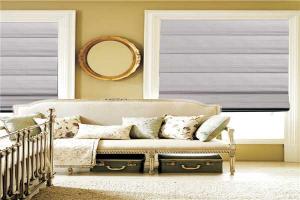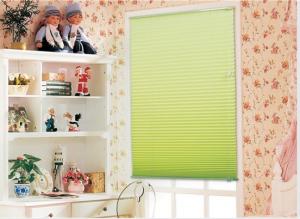Anti Insect PVC Strip Curtain in Yellow Color
- Loading Port:
- Tianjin
- Payment Terms:
- TT or L/C
- Min Order Qty:
- 50 Rolls roll
- Supply Capability:
- 15 Containers Per Month roll/month
OKorder Service Pledge
OKorder Financial Service
You Might Also Like
Specifications of Factory-sale Anti Insect PVC Strip Curtain
Application tempt range: -15℃to 50℃
Thickness range from 1.5mm to 6mm
Width range from 150mm to 400mm
Standard Sizes
2mmX200mmX50m; 2mmX300mmX50m;
3mmX200mmX50m; 3mmX300mmX50m;3mmX400mmX50m
4mmX300mmX50m; 4mmX400mmX50m
Applications of Factory-sale Anti Insect PVC Strip Curtain
Windows in commercial food preparation areas need to comply with the latest food and Hygiene Regulations by fitting a screen which prevents the entry of insects, birds and other infestations. Insect-Proof PVC strip curtain is an ideal solution for anywhere that insects aren’t welcome. Insect proof PVC strip curtain made with a specially formulated repellent material that wards off insects. Sanitation authorities are highly concerned with the hygiene conditions of food and drug handling areas.
Ideal solutions for
- Back doors of restaurants
- Personnel doors at commercial and manufacturing locations
- Open air concessions at parks, sports arenas and other outdoor facilities
- Any open area where flying insects are a pest
Package& Delivery of Factory-sale Anti Insect PVC Strip Curtain
Wooden pallet,shirnk film according to custom requires.
Colors of Factory-sale Anti Insect PVC Strip Curtain
Yellow is the only color available in proof insect. It emits special light which dispels insects.
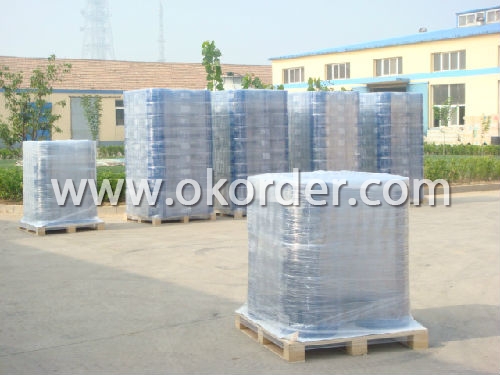
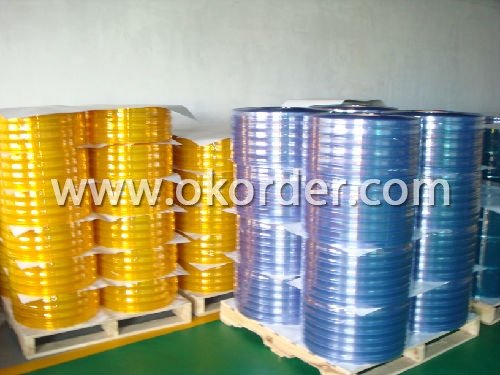
- Q: How do plastic home appliances compare in terms of energy-efficient certifications?
- Plastic home appliances typically vary in terms of energy-efficient certifications. While plastic can be used in the manufacturing of energy-efficient appliances, it is important to consider the specific certifications and standards that the appliance holds. The energy efficiency of an appliance depends on various factors, including its design, components, and overall energy consumption. Therefore, it is crucial to research and compare the energy-efficient certifications of individual plastic home appliances before making a purchase decision.
- Q: Can plastic parts in home appliances be repaired if they are damaged?
- Yes, plastic parts in home appliances can often be repaired if they are damaged. Depending on the extent of the damage, various repair methods such as adhesive bonding, welding, or 3D printing can be employed to restore functionality to the plastic part. However, the success of the repair may vary depending on the specific appliance and the severity of the damage.
- Q: How does the use of plastic in home appliances impact the overall ease of manufacturing?
- The use of plastic in home appliances positively impacts the overall ease of manufacturing. Plastic is a versatile and lightweight material that can be easily molded into various shapes and sizes, allowing for greater design flexibility. It also reduces the weight of the appliance, making it easier and cheaper to transport. Additionally, plastic is a cost-effective material compared to other alternatives, such as metal, and can be produced at a faster rate, increasing manufacturing efficiency.
- Q: How does the use of plastic in home appliances impact the environment?
- The use of plastic in home appliances has a significant impact on the environment. Firstly, the production of plastic requires the extraction of fossil fuels, contributing to greenhouse gas emissions and climate change. Additionally, the manufacturing process itself emits harmful pollutants into the air, water, and soil. Once these appliances reach the end of their life cycle, the disposal of plastic poses a major problem. Most plastic ends up in landfills or incinerators, where it takes hundreds of years to decompose, releasing toxic chemicals into the environment. Moreover, plastic waste often finds its way into oceans and waterways, harming marine life and polluting ecosystems. Overall, the use of plastic in home appliances contributes to environmental degradation and highlights the need for more sustainable alternatives.
- Q: How do plastic home appliances compare in terms of energy-saving technologies?
- Plastic home appliances, like any other type of appliances, vary in terms of energy-saving technologies. While plastic itself does not directly impact energy efficiency, the energy-saving features incorporated into these appliances, such as smart technology, power-saving modes, and improved insulation, determine their energy efficiency. Therefore, the comparison of plastic home appliances in terms of energy-saving technologies depends on the specific models and brands available in the market.
- Q: Are plastic home appliances available in a wide range of colors?
- Yes, plastic home appliances are available in a wide range of colors.
- Q: How do home appliance plastics resist scratches or damage?
- Home appliance plastics resist scratches or damage due to their durable and resilient nature. They are often made from high-quality polymers or composites that have a high resistance to wear and tear. Additionally, manufacturers may apply protective coatings or finishes to further enhance their scratch resistance.
- Q: Are there any concerns with using plastic in appliances that come in contact with hot surfaces?
- Yes, there are concerns with using plastic in appliances that come in contact with hot surfaces. Plastic can melt or deform when exposed to high temperatures, releasing harmful chemicals and potentially contaminating the food or beverage being prepared. Additionally, excessive heat can cause plastic to release toxic fumes, posing health risks to users. It is advisable to use heat-resistant materials, such as metal or heat-resistant plastics, in appliances that come in contact with hot surfaces to ensure safety and durability.
- Q: Can plastic parts in rice cookers release chemicals into the cooked rice?
- Yes, plastic parts in rice cookers can release chemicals into the cooked rice, especially when exposed to high temperatures for prolonged periods. It is recommended to use rice cookers with non-toxic, BPA-free plastic components or opt for rice cookers made with stainless steel or ceramic materials to minimize the potential for chemical leaching.
- Q: How does plastic contribute to the overall energy consumption of home appliances?
- Plastic contributes to the overall energy consumption of home appliances in a few ways. Firstly, plastic is often used in the manufacturing of appliance components, such as casings and internal parts. The production of plastic requires energy-intensive processes, including extracting and refining raw materials, manufacturing, and transportation. Secondly, the use of plastic in appliances can affect their energy efficiency. Poorly designed plastic components can lead to increased friction, heat generation, and reduced overall performance, which in turn require more energy to operate. Additionally, plastic packaging used for appliances increases the energy footprint through its production, transportation, and disposal processes. Therefore, reducing the use of plastic in appliance manufacturing and packaging can help decrease their overall energy consumption.
1. Manufacturer Overview
| Location | Hebei, China |
| Year Established | 1995 |
| Annual Output Value | Above US$ 50 Million |
| Main Markets | 15.00% Mid East 10.00% Northern Europe 10.00% North America 30.00% Eastern Asia 10.00% Africa 9.00% Eastern Europe 8.00% Southeast Asia 3.00% Oceania 3.00% Western Europe 2.00% Southern Europe |
| Company Certifications | ISO 9001 |
2. Manufacturer Certificates
| a) Certification Name | |
| Range | |
| Reference | |
| Validity Period |
3. Manufacturer Capability
| a) Trade Capacity | |
| Nearest Port | Tianjin; Qingdao; Shagnhai; Guanghzou |
| Export Percentage | 41% - 50% |
| No.of Employees in Trade Department | 21-50 People |
| Language Spoken: | English; Chinese |
| b) Factory Information | |
| Factory Size: | Above 100,000 square meters |
| No. of Production Lines | Above 5 |
| Contract Manufacturing | OEM Service Offered; Design Service Offered |
| Product Price Range | High; Average |
Send your message to us
Anti Insect PVC Strip Curtain in Yellow Color
- Loading Port:
- Tianjin
- Payment Terms:
- TT or L/C
- Min Order Qty:
- 50 Rolls roll
- Supply Capability:
- 15 Containers Per Month roll/month
OKorder Service Pledge
OKorder Financial Service
Similar products
Hot products
Hot Searches
